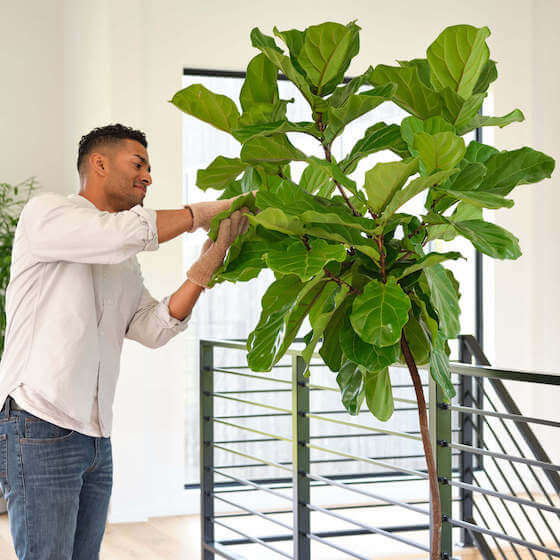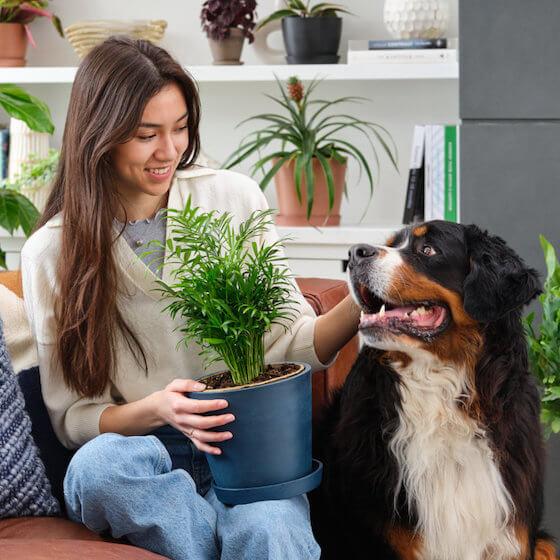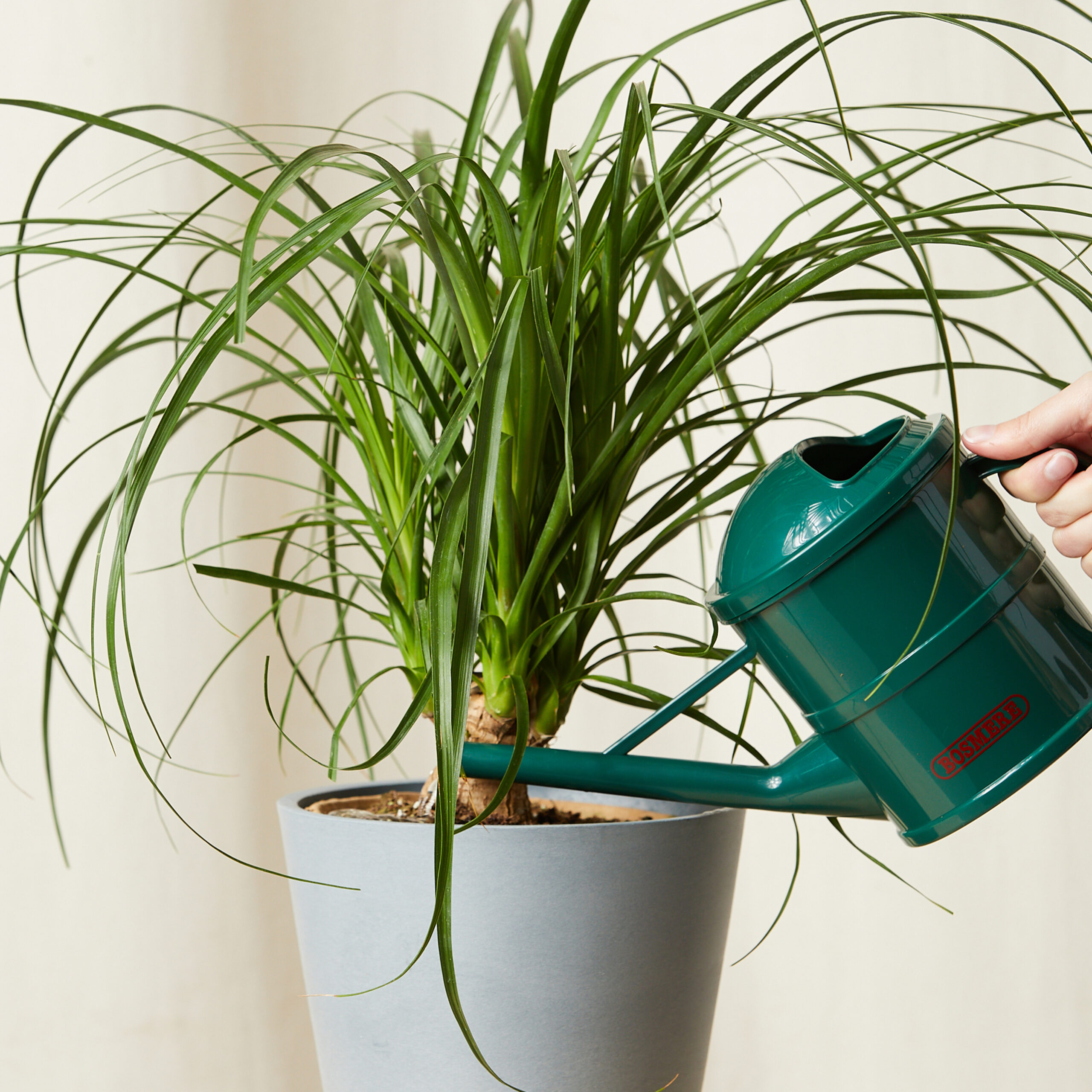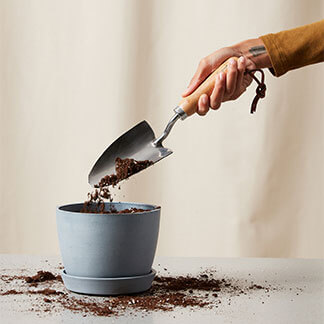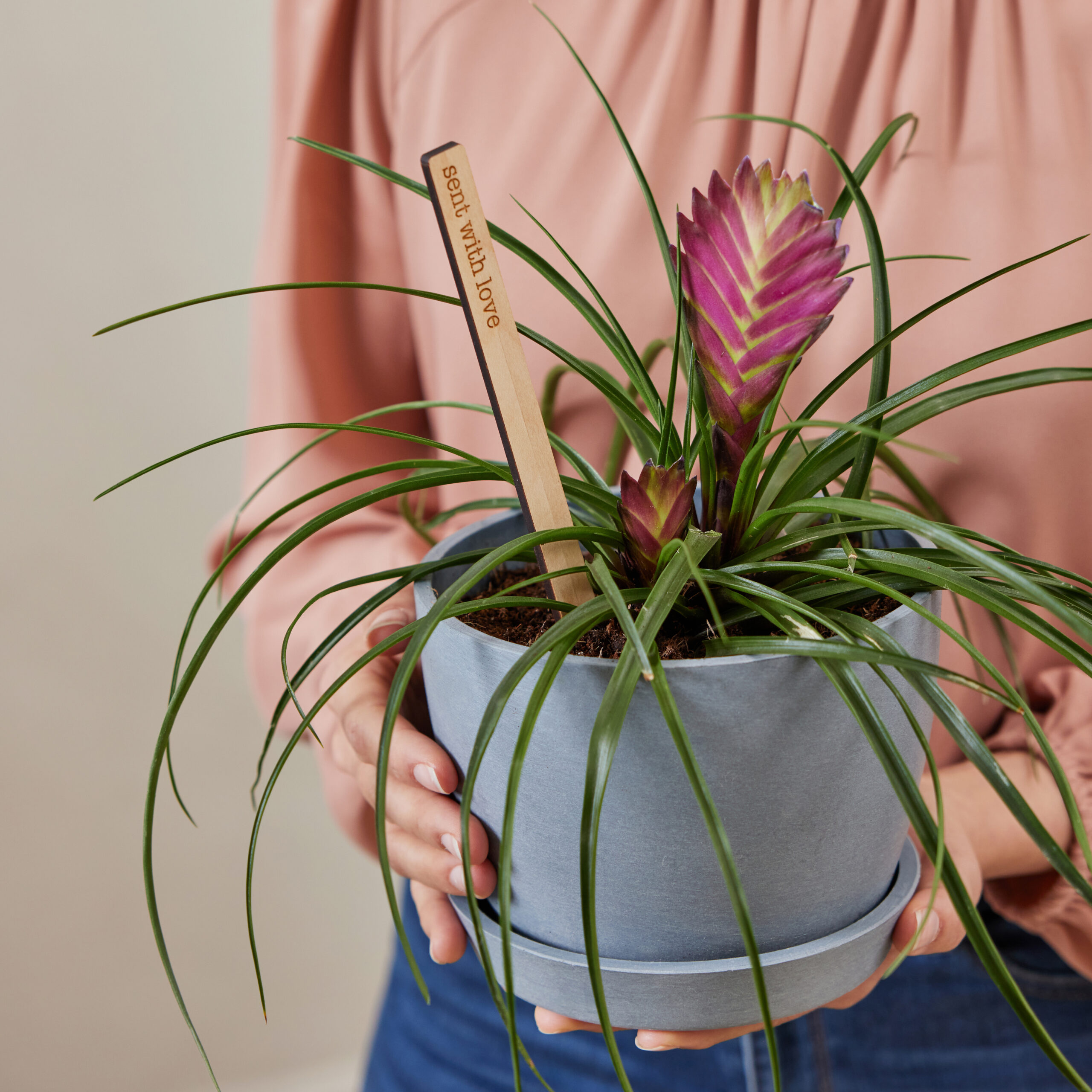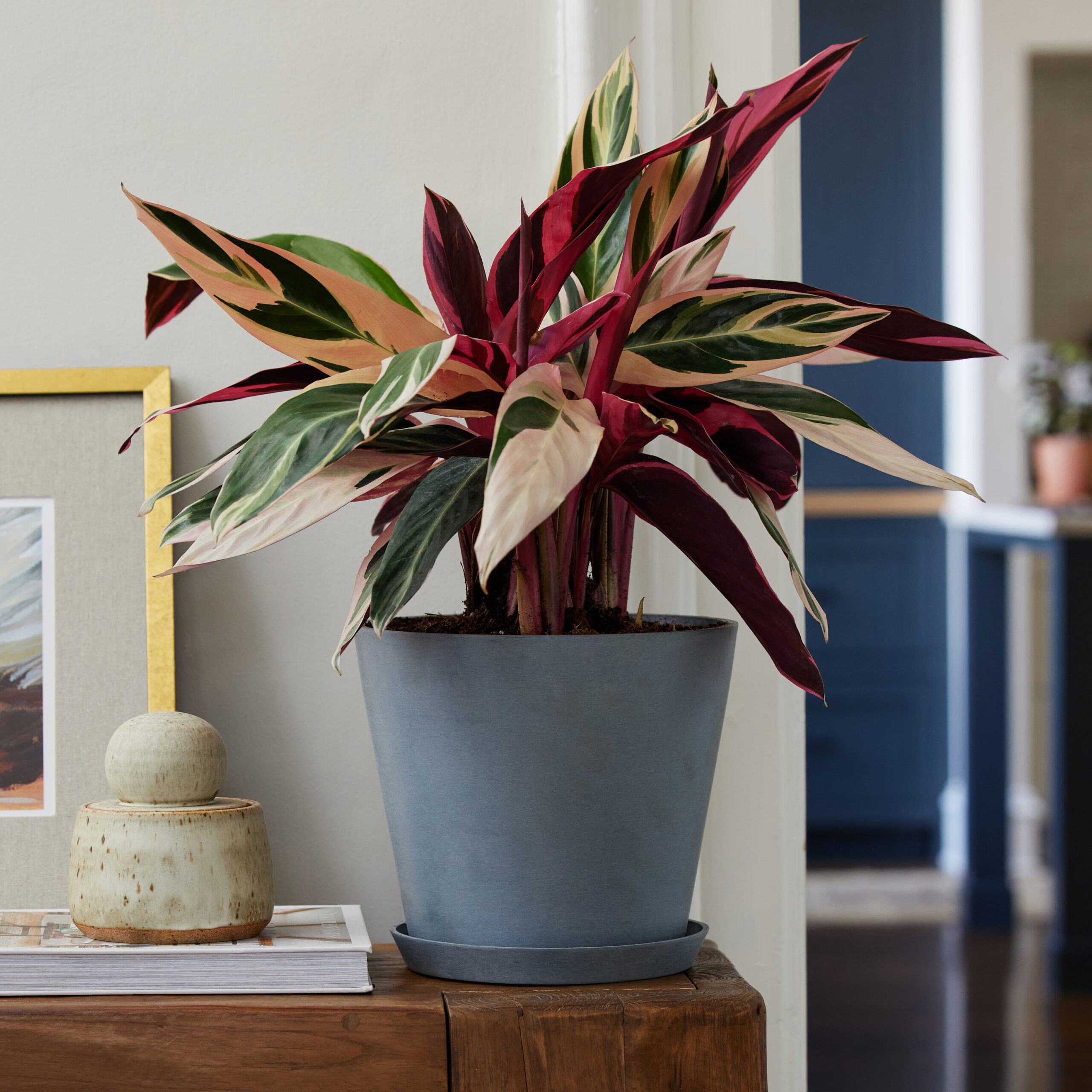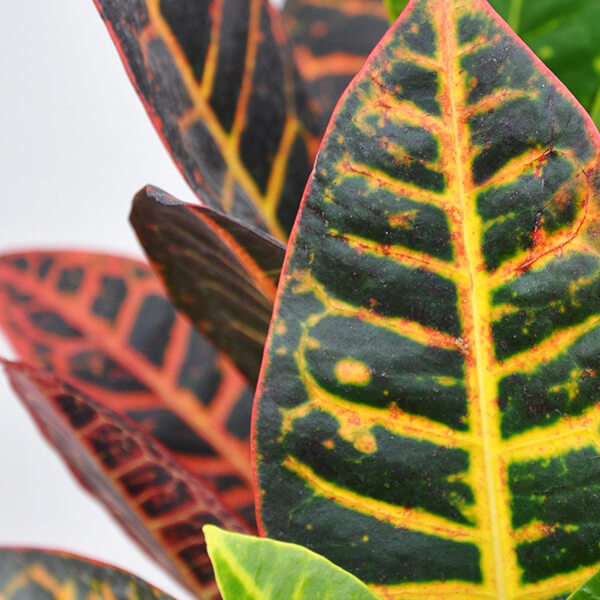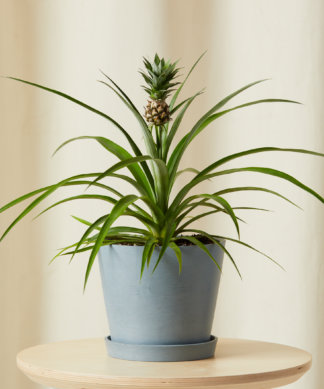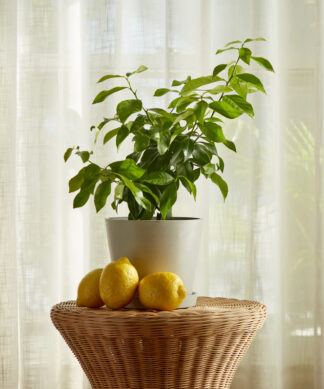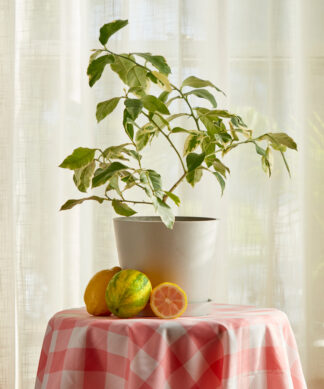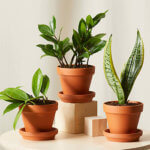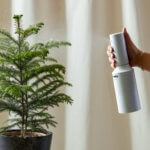How to care for your Croton
Use these instructions to care for a Croton. This guide will tell you how to water a Croton; its light, temperature, humidity preferences and any additional care it might need to help it grow.
Croton Magnificent
Your Croton Magnificent will do best in a bright spot, as it needs lots of light (if possible 4-6 hrs. Per day) to produce all those colorful leaves! If your croton does not get enough light, you might find the plant grows tall and lanky with spare leaves lacking the rich, dark hues.
Water when the top 25%-50% of the soil is dry. Water until liquid flows through the drainage hole at the bottom of the pot and discard any water that has accumulated in the saucer.
Crotons appreciate a generous amount of humidity. You can boost the humidity by misting the leaves, placing a humidifier nearby, or adding a pebble tray.
Your Croton Magnificent prefers temperatures between 60-70 degrees. Keep your Croton away from drafts and cold areas like a windowpane in the winter.
For best results, use a general houseplant fertilizer once in early spring, once in early summer, and again in mid-summer. Do not feed in the fall or winter.
Don’t panic if your plant drops a few leaves upon arrival. Generally, the Croton Magnificent does not like to be moved, so a few falling leaves within a week doesn’t mean you are doing anything wrong.
Your Croton Magnificent is moderately toxic to pets and humans. Typically, ingestion will cause mouth and stomach irritation and possible vomiting.
Croton Petra
Your Croton Petra will do best in a bright spot, as it needs lots of light (if possible 4-6 hrs. Per day) to produce all those colorful leaves! If your croton does not get enough light, you might find the plant grows tall and lanky with spare leaves lacking the rich, dark hues.
Water when the top 25%-50% of the soil is dry. Water until liquid flows through the drainage hole at the bottom of the pot and discard any water that has accumulated in the saucer.
Crotons appreciate a generous amount of humidity. You can boost the humidity by misting the leaves, placing a humidifier nearby, or adding a pebble tray.
This plant prefers temperatures between 60-70 degrees. Keep your Croton Petra away from drafts and cold areas like a windowpane in the winter.
For best results, use a general houseplant fertilizer once in early spring, once in early summer, and again in mid-summer. Do not feed in the fall or winter.
Moderately toxic to pets and humans. Typically, ingestion will cause mouth and stomach irritation and possible vomiting.
Don’t panic if your plant drops a few leaves upon arrival. Generally, the Croton Petra does not like to be moved, so a few falling leaves within a week doesn’t mean you are doing anything wrong. Make sure you follow the water and light guidelines and, with a little TLC, before you know it you will have fresh, tender leaves that will soon mature to their full, blazing glory!
Variegated Croton
The Croton loves its time under full sun exposure but can tolerate a bit of shade. An interesting fact to keep in mind is that the amount of light directly affects the leaves’ color. In other words, the brighter the light source, the more vibrant the colors.
Watering can present a bit of a challenge when providing Croton Plant care. On the one hand, this tropical plant loves its moisture, but watering too much too often leads to root rot. The best tip to follow is to check the soil for dryness. If you feel dry spots, or your Croton starts to droop, then it’s thirsty.
When caring for your Croton, aim for a high humidity level of 40 to 80 percent. This can be achieved by keeping a humidifier in the same room as your plant or placing it on a tray of pebbles and water. To prevent leaves from dropping, try misting them often.
Originating in the tropics, the Croton grows best in warm temperatures no higher than 80℉ but no lower than 60℉. As long as your plant isn’t exposed to extreme heat or cold drafts, it will thrive. So remember to keep it far from vents.
Optimal Croton Plant care includes using an 8-2-10 ratio fertilizer since it prefers acidic soil. You can apply slow-release pellets during the growing seasons (early fall, mid-summer, and spring) at a rate of three feedings per season. Or you can opt for a liquid fertilizer diluted at half strength once a month from early March until late September. Avoid feeding your plant in the winter.
If ingested by pets or humans, the Croton is moderately toxic to where the person or animal might experience symptoms like mouth and stomach irritation.
Don’t panic if your plant drops a few leaves upon arrival. This is a normal stress response common to crotons. Place the plant in the recommended light, water as advised, and allow the plant to adjust to its new environment over the following few weeks. Before you know it you will have fresh, tender leaves that will soon mature to their full, blazing glory!
